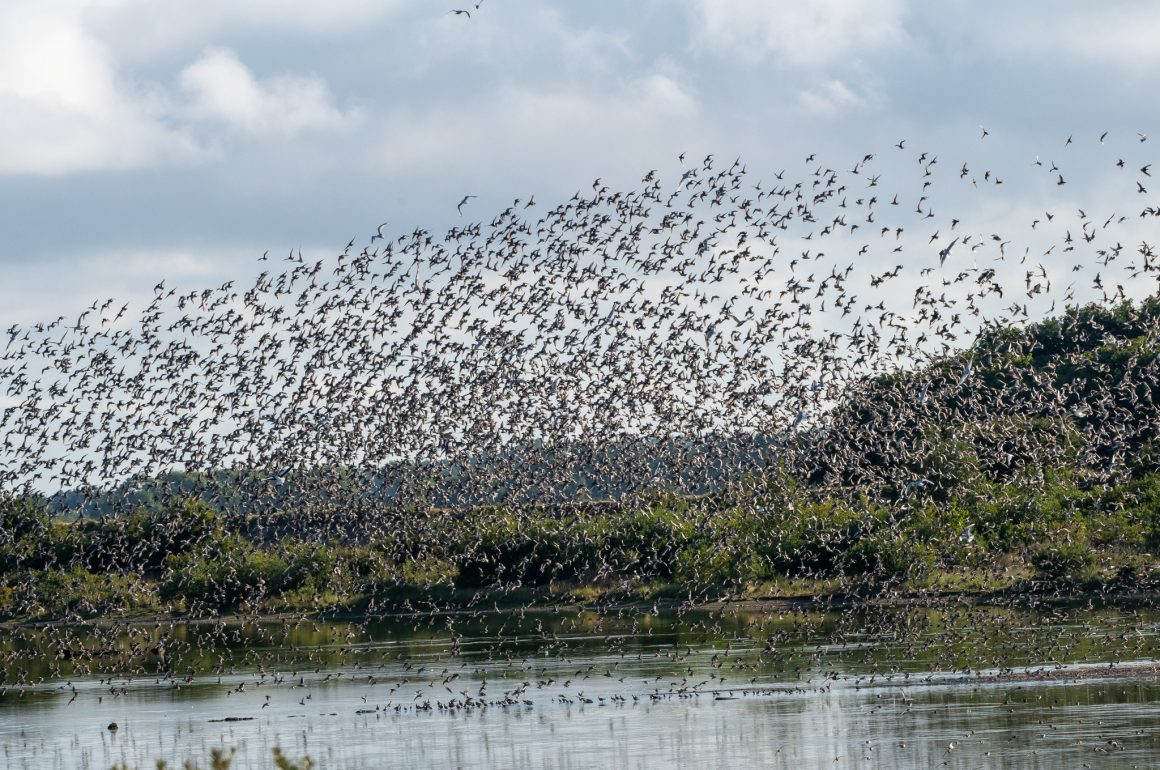
Every birding excursion can be an incredible experience. There are many birds, cool interactions, and interesting species—every day is different. Here are a few underrated, unique bird experiences to strive to see.
Wader Spectacle – Snettisham, England
Snettisham is a little village on the west coast of Norfolk, England. Just outside town is the Snettisham RSPB reserve that sits along The Wash, a large estuary. The reserve protects important lagoons and has several hides to view the birds. Snettisham has a unique geological nature that attracts millions of migratory birds to feed in the protected bay. One of the first instances of shorebird banding in England occurred in The Wash – so you know it must have good shorebirds!
The Wader Spectacular is a natural event in which the incoming tides push birds off the mudflats. The vast, expansive mudflats provide a premium foraging habitat full of shellfish and worms. It does not sound that impressive, but the tide comes in very fast over the mudflats and forces some of the larger waders, like Eurasian Oystercatchers, to run from the incoming water, and smaller birds, like Red Knots, take off in huge flocks towards safety. The noise and chaos of millions of birds escaping the water is an incredible sight to behold.
More information about this incredible event can be found here, 2025 dates should be posted soon: https://community.rspb.org.uk/placestovisit/titchwellmarsh/b/titchwellmarsh-blog/posts/snettisham-spectacles-2024-dates-times
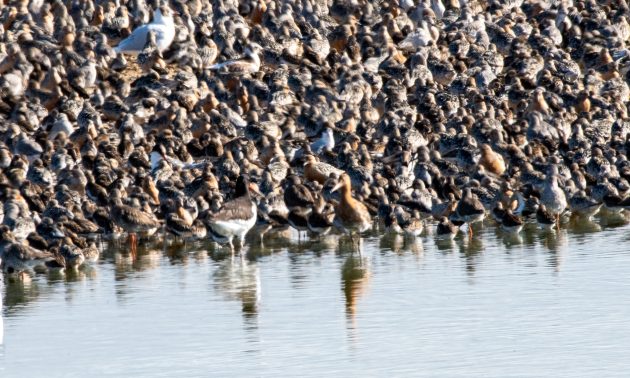
Scissor-tailed Kites Roost – Kaolack, Senegal
Raptors are typically seen in low numbers as they are at the top of the food chain, and their prey items may be sparser across their habitat. So, when you see a large group of birds of prey – it is a real showstopper.
Outside of Kaolack, Senegal in West Africa is a roost site in Forêt Classée de Kousmar. If you visit this location in the evenings from October to March, you can see a spectacular scene of over 2,500 Scissor-tailed Kites coming into roost for the night. This beautiful species inhabits the arid savannahs of the Sahel region, where they feed on lizards, snakes, rodents, and arthropods. As the sun goes down and it begins to cool for the evening, the kites land on the branches of trees along the waterway, looking like small Christmas ornaments with the glow of orange behind them.
Read more about this experience: https://www.10000birds.com/birding-senegal-costco-ads-and-scissor-tailed-kites.htm
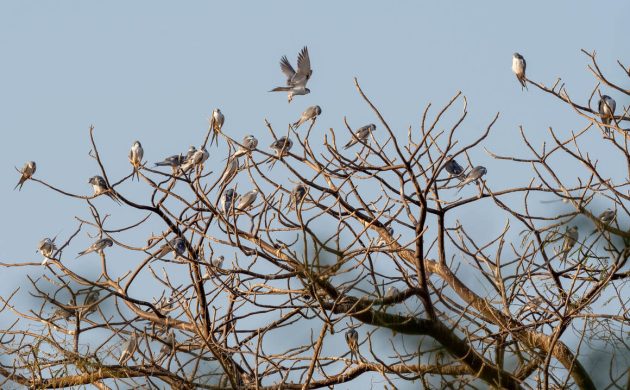
Vaux’s Swifts – Portland, Oregon, USA
Few birds look like they enjoy flying as much as swifts and swallows. They make flying look effortless. In the family Apodidae, swifts have tiny feet and cannot perch – however, they cling to surfaces like trees and chimneys. Humans built structures (like chimneys) within their range; Vaux’s Swifts have taken to them.
In the fall, they join in large flocks to migrate south to Central America and Venezuela. Portland, Oregon, is directly on the path. In northwest Portland, the Chapman Elementary School has an attractive chimney in which many of the 35,000 swifts that travel through may roost.
These birds move through in September, which has become a popular event for birders and non-birders in the area. So, if you get a chance, trek down in the evening before sunset, and you will be treated to a show of Vaux’s Swifts, who swirl through the sky in huge flocks and eventually make their way into the chimney.
Here is more information: https://birdallianceoregon.org/our-work/rehabilitate-wildlife/having-a-wildlife-problem/vauxs-swifts/

Snow Geese – Merced, California, USA
Large groups of birds can easily attract a crowd, like with the swifts, but are even more impressive when they are bigger birds. Merced National Wildlife Refuge (NWR) is along the Pacific Flyway and offers a safe stopover point for many species from Alaska to Patagonia. This NWR comprises 10,000 acres of wetlands as part of the San Luis National Wildlife Refuge and attracts wintering waterfowl for foraging to help protect nearby farmland from damaging crops. As many as 60,000 geese will pass through or overwinter at this site.
Visit between December and March, and you will see thousands of Snow Geese foraging, honking, and taking flight throughout the wetlands. The congregation of so many birds is deafening and mind-boggling if you try to get an accurate count.
Learn more here: https://www.fws.gov/refuge/merced/species
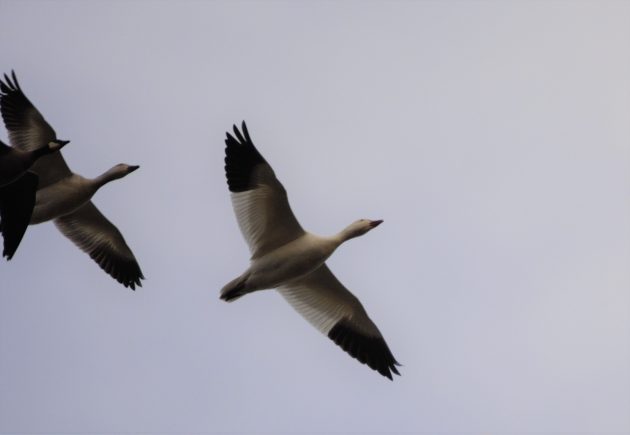
Guianan Cock-of-the-rock lek – Amazonas, Brazil
Imagine wandering through a terra firme forest and seeing a fluorescent orange bird hopping around low in the trees—it seems like something straight out of National Geographic, right? The Guianan Cock-of-the-rock is seen around rocky caves and huge boulders and is sought out for its incredible display at lek sites. This species can be found in parts of Colombia, Venezuela, and Brazil.
I was lucky enough to see several males at a lek site at Aldeia Marí Marí outside of Presidente Figueiredo in Brazil, and it was truly amazing. Seven bright orange males explored the lek site for over an hour, waiting for a female to swing by and see what they had to offer. Sitting on the leaf-strewn floor, it felt like I had been transported into the scene of a nature documentary, and it was an amazing experience.
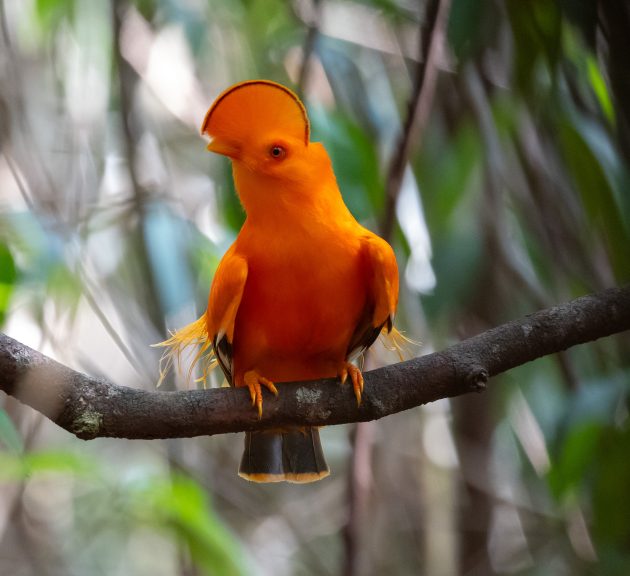
Every time I go outside, I see something unique. Whether it is migrating birds arriving in my neck of the woods or a unique interaction between species, you do not have to go much further than your backyard to see something remarkable. However, there are also amazing things to see around the world!
Comment with an incredible birding experience that sticks out in your memory!













For sheer spectacle, the lesser flamingoes in Kenya’s Great Rift Valley take some beating. Lake Nakuru can attract 2 million birds, but Lake Bogoria, to the north of Nakuru, can be equally spectacular.
Closer to home (at least for me!) encountering the great flocks of pink-footed geese that winter in North Norfolk (UK) can be a terrific experience – it’s quite possible to see several thousand geese at once, a sight that is both exciting to see and to hear.